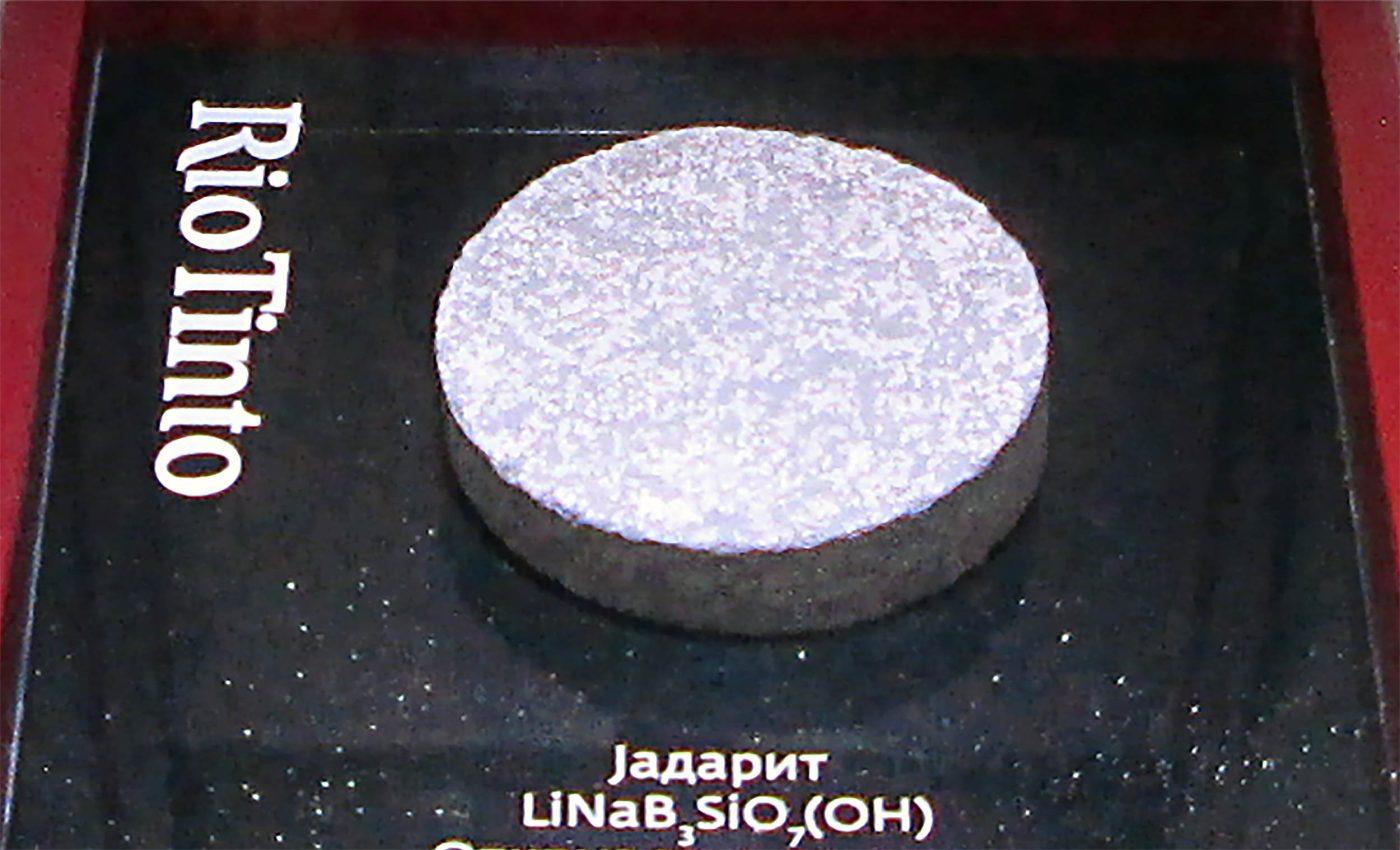
Jadarite, described as 'Earth's kryptonite twin,' has potential to replace fossil fuels
A plain‑white mineral found in western Serbia has a name straight out of the comics and a chemical profile that battery makers crave. Called jadarite, also known as sodium‑lithium‑boron silicate hydroxide, was first pulled from drill cores in 2004 and officially recognized as a new mineral two years later.
Geologists soon noticed that the formula on the sample label matched the faux “kryptonite” shown in a 2006 Superman film, minus the fluorine and the green glow.
That pop‑culture twist helped the discovery grab headlines, yet the real excitement lies in what the mineral could do for electric vehicles and renewable power storage.
Jadarite discovered in Serbia
Jadarite occurs as dull, chalky nodules tucked inside fine‑grained shale in the Jadar Valley. The host rocks formed in an ancient lake basin rich in volcanic ash, allowing lithium and boron to build up in the pore waters until the mineral crystallized.
Those conditions have been found only in Serbia so far, making the deposit both unique and strategically valuable.
Michael Page, a process chemist at Australia’s Nuclear Science and Technology Organisation (ANSTO), points out that the valley “is considered one of the largest lithium deposits in the world, making it a potential game‑changer for the global green energy transition.”
Researchers at the Natural History Museum in London, including mineralogist Robin Armstrong, later traced the steps nature followed.
They showed that alkaline terminal lakes, lithium‑rich volcanic glass, and the gradual reworking of clay minerals all had to line up in a narrow window of temperature and pH.
Jadarite could replace gasoline
Each ton of jadarite contains roughly seven percent lithium, the light metal that lets rechargeable batteries pack a lot of energy without much weight.
The rock also carries high levels of boron, used in fiberglass, smartphone glass, and wind‑turbine blades, turning what would be waste in other ores into a marketable by‑product.
If the planned underground mine goes ahead, Rio Tinto estimates annual output of about 58,000 tons of battery‑grade lithium carbonate, 160,000 tons of boric acid, and 255,000 tons of sodium sulfate. That scale would be enough to supply cathode material for several million electric cars a year.
Demand is rising fast. The International Energy Agency (IEA) projects global lithium use to grow fivefold by 2040 in its “Stated Policies Scenario” as nations switch from combustion engines to batteries.
Europe alone could see up to 90 percent of its current lithium needs covered by the Serbian deposit, according to market assessments.
“As the demand for lithium continues in the race toward renewable energy, if mined, jadarite can offer huge potential, said Dr. Armstrong, highlighting the stakes.
Rare conditions needed
“[The formation sequence is…] “similar to baking a cake, everything needs to be measured and exact … if the conditions are too acidic or too cold, jadarite will not form,” said lead author Francesco Putzolu.
The team’s lab experiments failed whenever they tweaked the water chemistry even slightly, hinting that only a few basins on Earth ever hit the sweet spot.
That rarity boosts the ore’s strategic appeal but complicates the search for new supplies.
Geologists are now combing satellite images for dried‑up lake beds fringed with volcanic tuffs, hoping to locate a second occurrence. So far, none has surfaced.
New method can extract lithium and boron
Extracting lithium from jadarite is trickier than from brines or spodumene because the sodium and boron tie up the metal in a tight molecular cage.
ANSTO engineers have responded by testing a two‑step leach and purification circuit that recovers high‑purity lithium carbonate while capturing boric acid as a co‑product.
Page says the challenge of a “new type of mineral resource” energizes the pilot team, which has already produced battery‑grade chemicals from bulk samples sent to Australia.
Commercial plants would likely use a similar hydrometallurgical flow sheet, avoiding the energy‑intensive roasting needed for spodumene and cutting overall carbon emissions.
Mining brings promise but sparks protests
Serbian communities are not unanimous in welcoming the mine. Environmental groups warn that alkali‑rich tailings could leak into the Jadar River and harm local agriculture.
Independent studies have found elevated boron and lithium downstream of exploratory boreholes, fueling weekly protests in Belgrade.
Supporters counter that rigorous water‑management plans and sealed tailings cells can limit impacts, and that the economic gains, including thousands of skilled jobs, are hard to ignore.
European automakers also see the project as a chance to shorten supply chains now dominated by South American brines and Chinese refiners.
The search beyond Serbia
Whether or not the Jadar project reaches full production, the mineral has already altered the critical‑minerals map.
Its existence proves that lithium can concentrate outside traditional pegmatites and brines, broadening the hunt to basins once dismissed as uneconomic clay.
Researchers are now experimenting with synthetic pathways, seeding gels of silica, borate, and lithium under lake‑like conditions to see if jadarite can be grown on demand.
Success could pave the way for engineered deposits that bypass mining altogether. For now, though, nature’s one known batch in western Serbia remains the focus of intense scientific, industrial, and public scrutiny.
The study is published in Nature Geoscience.
—–
Like what you read? Subscribe to our newsletter for engaging articles, exclusive content, and the latest updates.
Check us out on EarthSnap, a free app brought to you by Eric Ralls and Earth.com.
—–













